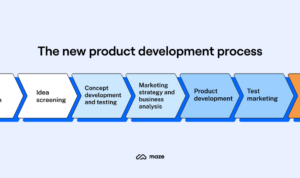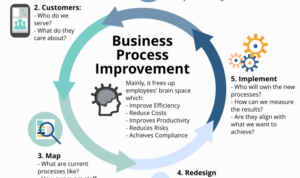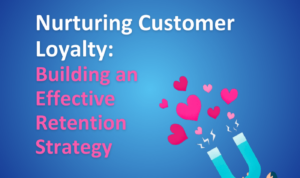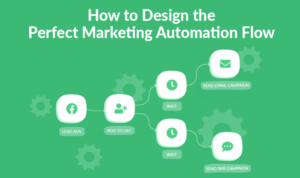Using LinkedIn for B2B Marketing, dive into the world of professional networking and business growth with a fresh perspective that’s all about making those crucial connections.
Learn how to optimize your LinkedIn profile, create engaging content, and build strong relationships to boost your B2B marketing game.
Introduction to LinkedIn for B2B Marketing
In the realm of B2B marketing, LinkedIn stands tall like a skyscraper in the concrete jungle of social media platforms. It’s not just your average networking site; it’s a goldmine for businesses looking to connect, engage, and convert potential clients into loyal customers.
The Power of LinkedIn for B2B Marketing, Using LinkedIn for B2B Marketing
LinkedIn is not your grandma’s social media platform. It’s a powerhouse for B2B marketing, offering a plethora of tools and features that can elevate your marketing game to new heights.
- Professional Network: LinkedIn is a hub for professionals, decision-makers, and industry leaders, making it the perfect playground for B2B marketers looking to reach the right audience.
- Targeted Advertising: With LinkedIn’s precise targeting options, you can hone in on specific industries, job titles, and company sizes to ensure your message reaches the right eyes and ears.
- Content Marketing Opportunities: From publishing articles to sharing industry insights, LinkedIn provides a platform for businesses to showcase their expertise and establish thought leadership in their niche.
- Lead Generation Tools: LinkedIn offers powerful lead generation tools like Lead Gen Forms and Sponsored InMail, allowing businesses to capture leads and nurture them through the sales funnel.
- Analytics and Insights: With LinkedIn’s robust analytics, you can track the performance of your campaigns, measure ROI, and make data-driven decisions to optimize your marketing efforts.
Creating a Strong LinkedIn Company Profile
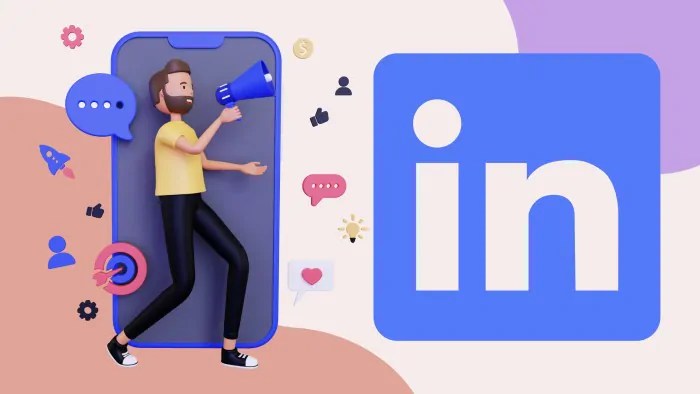
To create a strong LinkedIn company profile for B2B marketing, you need to optimize it with key elements that showcase your brand, engage your target audience, and drive conversions.
Optimizing Your LinkedIn Company Profile
- Include a professional and eye-catching profile picture and cover image that represent your brand visually.
- Write a compelling headline and about section that clearly communicates your company’s value proposition and what sets you apart from competitors.
- Utilize relevant s in your profile to improve searchability and attract the right audience.
- Add a call-to-action button to encourage visitors to take the next step, whether it’s contacting you, visiting your website, or downloading resources.
Key Elements of a Compelling Company Profile
- Company Overview: Provide a brief overview of your company’s history, mission, and what you offer.
- Products and Services: Highlight your key products and services, along with any unique selling points.
- Client Testimonials: Showcase testimonials from satisfied clients to build credibility and trust.
- Content Strategy: Share relevant and engaging content to position your company as a thought leader in your industry.
Successful LinkedIn Company Profiles in the B2B Space
When analyzing successful LinkedIn company profiles in the B2B space, you’ll often find a consistent focus on thought leadership, engaging content, and strong branding. Companies like IBM, Salesforce, and HubSpot excel in creating compelling company profiles that resonate with their target audience and drive results. By studying these profiles, you can gain insights into effective strategies for leveraging LinkedIn for B2B marketing.
Engaging Content Strategies on LinkedIn: Using LinkedIn For B2B Marketing
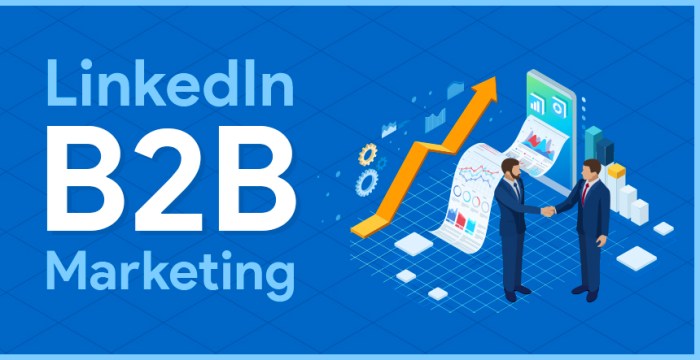
When it comes to B2B marketing on LinkedIn, creating engaging content is key to capturing the attention of your target audience and driving conversions. Let’s explore some effective strategies for crafting compelling content on this platform.
Types of Content That Perform Well on LinkedIn
- Thought leadership articles: Position your company as an industry expert by sharing valuable insights and opinions on relevant topics.
- Visual content: Use eye-catching images, infographics, and videos to make your posts stand out in the LinkedIn feed.
- Case studies and success stories: Showcase how your products or services have helped other businesses achieve their goals.
- Employee spotlights: Highlight the talented individuals behind your brand to humanize your company and build trust.
Best Practices for Creating Engaging Content on LinkedIn
- Understand your audience: Tailor your content to address the specific pain points and interests of your target market.
- Use a conversational tone: Keep your posts friendly and approachable to encourage interaction and engagement.
- Incorporate relevant hashtags: Research trending hashtags in your industry and include them in your posts to increase visibility.
- Encourage employee advocacy: Empower your team to share company updates and content on their personal LinkedIn profiles to amplify your reach.
Examples of Successful B2B Marketing Campaigns on LinkedIn
IBM’s “Smarter Planet” campaign leveraged thought-provoking content and powerful visuals to position the company as a leader in innovation and sustainability.
Adobe’s “Creativity for All” campaign showcased user-generated content and success stories to demonstrate the impact of their creative software solutions on businesses of all sizes.
HubSpot’s “Inbound Marketing Methodology” campaign utilized educational content and interactive tools to educate and engage their audience on the benefits of inbound marketing strategies.
Building Relationships and Networking on LinkedIn
Building relationships and networking on LinkedIn is crucial for businesses looking to connect with potential B2B clients and establish a strong presence in their industry. By utilizing the platform effectively, companies can enhance their reputation, generate leads, and ultimately drive business growth.
Connecting with Potential B2B Clients
- Personalize Connection Requests: When reaching out to potential clients, make sure to personalize your connection requests to show genuine interest and start building a relationship.
- Engage with Content: Interact with the content shared by your target clients, whether through liking, commenting, or sharing, to establish a connection and demonstrate your industry knowledge.
- Utilize Advanced Search Filters: Use LinkedIn’s advanced search filters to find and connect with decision-makers within companies that align with your target audience.
Effective Networking and Relationship-Building
- Engage Consistently: Regularly interact with your connections by sharing valuable content, congratulating them on achievements, and engaging in meaningful conversations to strengthen relationships.
- Offer Value: Provide value to your network by sharing industry insights, offering solutions to common challenges, and showcasing your expertise to position yourself as a valuable resource.
- Attend Virtual Events: Participate in virtual events, webinars, and industry conferences on LinkedIn to network with like-minded professionals and expand your reach.
Role of LinkedIn Groups
LinkedIn Groups play a significant role in B2B marketing by providing a platform for professionals to connect, share insights, and establish thought leadership within their industry. Businesses can leverage LinkedIn Groups by:
- Joining Relevant Groups: Identify and join LinkedIn Groups that cater to your target audience and actively participate in discussions to build relationships with potential clients.
- Sharing Valuable Content: Share informative articles, industry updates, and resources within LinkedIn Groups to showcase your expertise and engage with group members.
- Establishing Thought Leadership: Contribute valuable insights, answer questions, and participate in discussions to position your business as a thought leader in the industry and gain visibility among potential clients.

